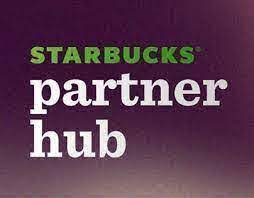In 2018, there was a major hack of Starbucks accounts. Hackers were able to steal usernames and passwords from other websites and use them to log into Starbucks accounts. This allowed them to steal money from customers’ bank accounts and credit cards.
Starbucks said that their system was not breached, but that the hack was caused by people reusing their passwords on multiple websites. When a hacker gets a hold of your username and password from one website, they can try it on other websites to see if it works. If you reuse your password on multiple websites, then the hacker will be able to access all of your accounts.
This hack is a great example of why you should never reuse passwords. If you reuse a password on multiple websites, and one of those websites is hacked, then all of your accounts are at risk.
The Starbucks Partner Hub
The Starbucks Partner Hub is a website for Starbucks employees. It contains information about Starbucks policies and procedures, as well as training materials. Starbucks employees use the Partner Hub to access their paystubs, benefits information, and other important resources.
The Starbucks Partner Hub is also a target for hackers. In 2019, there was a report of a phishing attack targeting Starbucks employees. The phishing email appeared to be from Starbucks and asked employees to click on a link to update their Partner Hub password. However, the link actually took employees to a fake website that looked like the Partner Hub login page. If an employee entered their username and password on the fake website, the hacker would be able to steal their credentials.
This phishing attack is a reminder that Starbucks employees need to be careful about protecting their Partner Hub accounts. Starbucks employees should never click on links in emails from unknown senders. If an employee is unsure whether an email is legitimate, they should contact Starbucks IT support.
How to avoid being hacked
There are a few things you can do to avoid being hacked:
- Use strong, unique passwords for all of your online accounts. Your passwords should be at least 12 characters long and include a mix of upper and lowercase letters, numbers, and symbols.
- Do not reuse passwords on multiple websites. If you reuse a password on multiple websites, and one of those websites is hacked, then all of your accounts are at risk.
- Use a password manager to help you keep track of your passwords. A password manager is a software application that stores your passwords in an encrypted format. This makes it easy to create and use strong, unique passwords for all of your online accounts.
- Be careful about clicking on links in emails from unknown senders. If you are unsure whether an email is legitimate, do not click on any links in the email. Instead, contact the company directly to verify the email.
What to do if you think you have been hacked
If you think you have been hacked, there are a few things you can do:
- Change your passwords on all of your online accounts.
- Contact your bank and credit card companies to let them know that you have been hacked. They may be able to monitor your accounts for fraudulent activity and cancel any cards that have been compromised.
- File a report with the Federal Trade Commission (FTC). The FTC can help you recover from identity theft and prevent future fraud.
Conclusion
The Starbucks hack is a great example of why you should never reuse passwords. If you reuse a password on multiple websites, and one of those websites is hacked, then all of your accounts are at risk.
To avoid being hacked, use strong, unique passwords for all of your online accounts and do not reuse passwords on multiple websites. You should also be careful about clicking on links in emails from unknown senders.
If you think you have been hacked, change your passwords on all of your online accounts, contact your bank and credit card companies, and file a report with the FTC.


